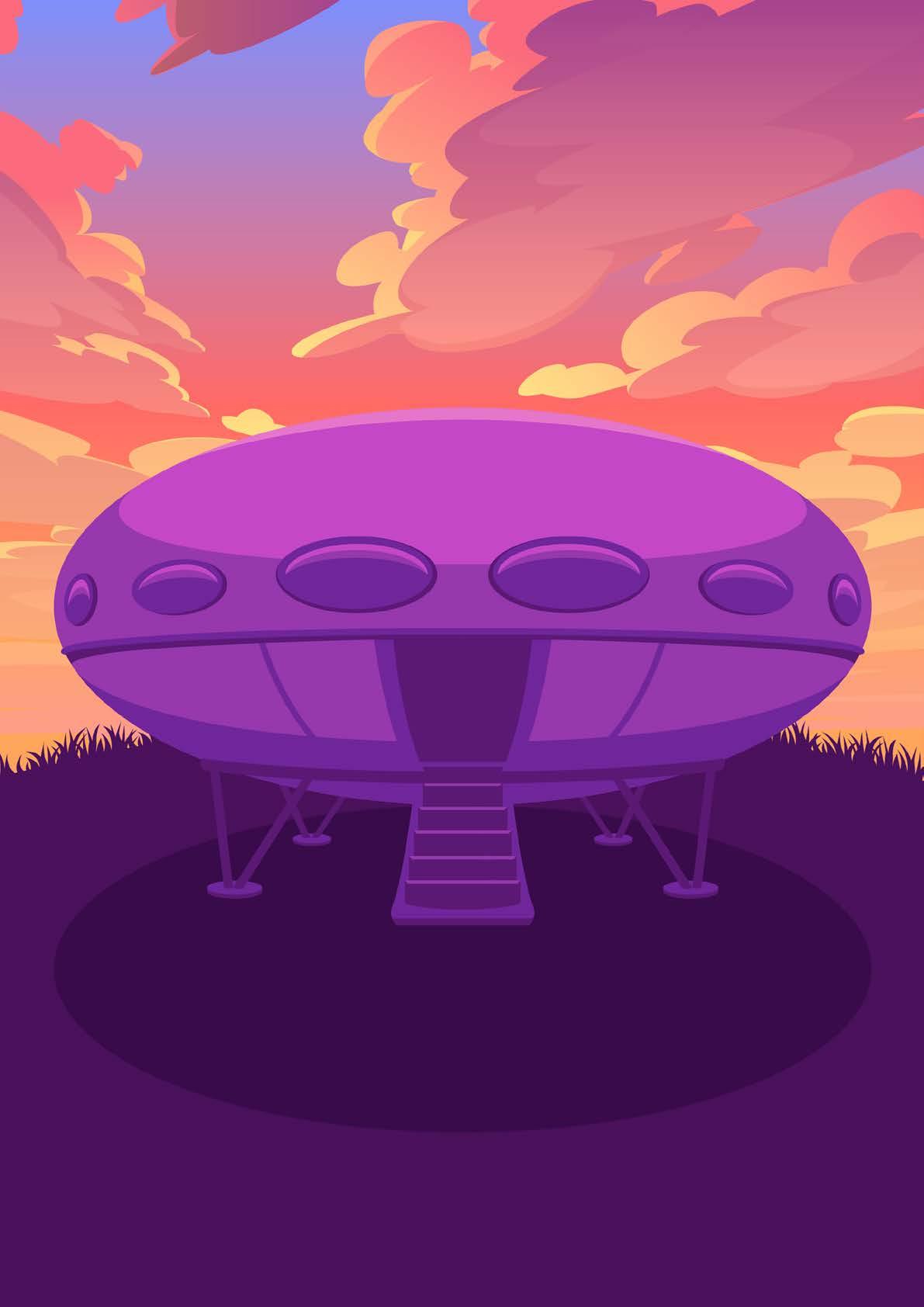
aadirections.co.nz WINTER 2024 OUR WINTER EDITION, ONLY AVAILABLE ONLINE Revealing New Zealand’s strangest stories
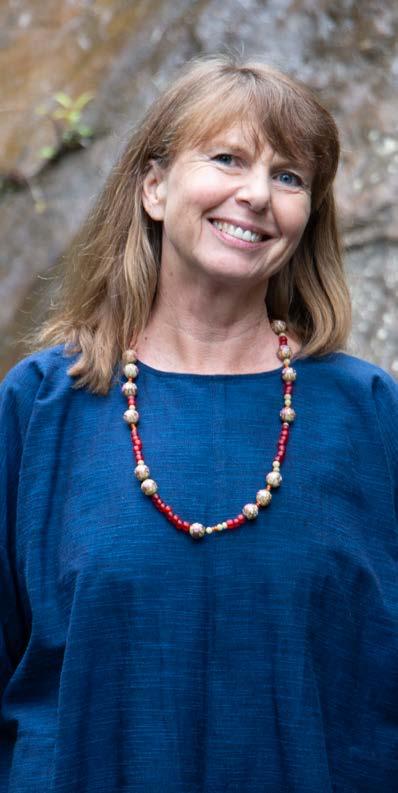
EDITORIAL TEAM
Kathryn Webster
Jo Percival
Emily Draper
DESIGN & ART DIRECTION
Julian Pettitt
Senior Designer, SCG
HOW TO REACH US
Editorial
AA Directions
Level 5
20 Viaduct Harbour Avenue
Auckland, 1010
PO Box 5, Auckland 1140
Phone 09 966 8800
Email: editor@aa.co.nz
Advertising
Moira Penman
Mobile: 021 228 5854
Email: Moira@gsjadvisory.co.au
COVER
Design & illustration by Julian Pettitt, inspired by Nancy Zhou photography
Follow AA Directions on Facebook or Instagram @aadirections
Website: aadirections.co.nz
Kia ora
Stories have long played a critical role in the keeping and sharing of knowledge. Once upon a time they explained perplexing natural phenomena. Sometimes stories contained warnings. When you go wandering into the woods on your own, you may get lost. Meddle with things that are not your business and there could be consequences. You may regret ignoring a warning! And not all is as it appears. Life includes mysteries and it pays to accept and respect that.
The people we spoke to in the gathering of the stories for this feature go a step beyond acceptance. They embrace mysteries. Curious, open-minded, fearless, they snoop around in the world of the unexplained, clearly ignoring some of those fairytale warnings!
And there is plenty to keep them busy in New Zealand: weird lights in the sky, signs of unidentifiable creatures, spectres drifting through history sending shivers up our spines. Is there a rational explanation for these strange goings-on, these shivery mysteries? Perhaps it depends on the storyteller and who is hearing the story.
CONTENTS
WINTER 2024

FEATURE
History or Mystery
Flashing lights, large footprints, ghostly voices. We meet those seeking to explain the unexplained.
1 aadirections.co.nz WELCOME
3
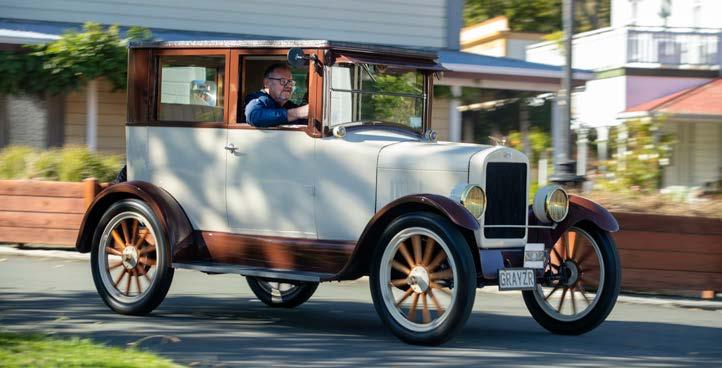
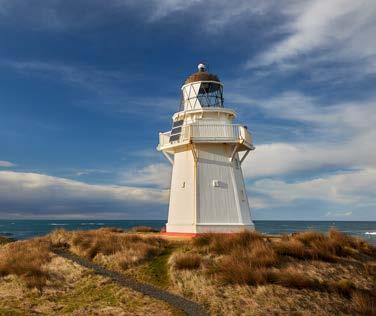
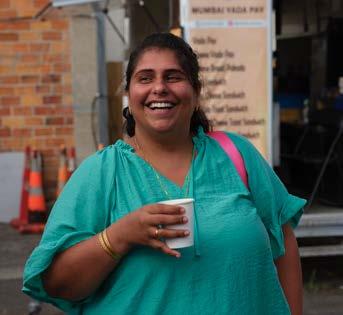
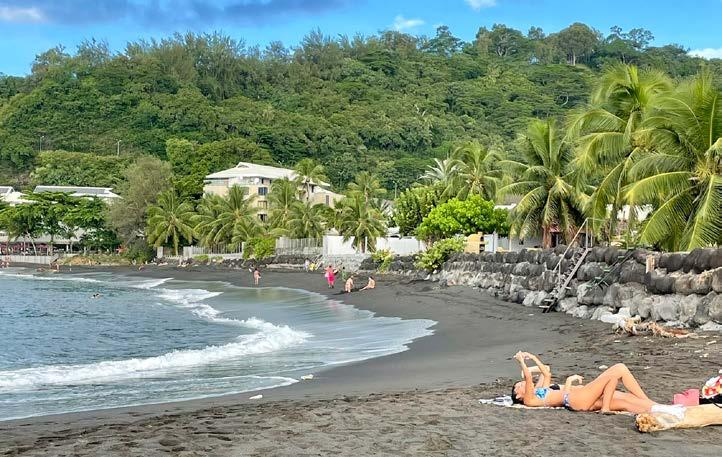
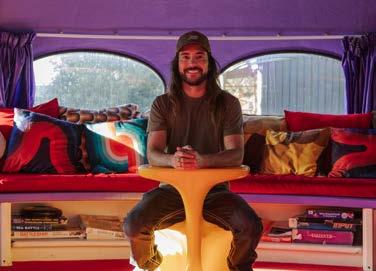
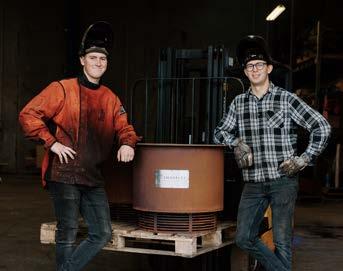
WHEEL LOVE
A 1923 Gray Coach chauffeurs the original owner’s greatgrandson to the wedding altar.
15
THE CATLINS
Weather-beaten cliffs and solitary lighthouses line our southernmost coastline.
17
SANDRINGHAM SPICE
Beyond butter chicken with a South Indian food tour nestled in Auckland’s city fringe.
19
TAHITI
A short sojourn through lush valleys and dense French Polynesian jungle.
21
E.T PHONE HOME
A 1970’s Futuro house with an out-of-this-world design.
23
MEET THE MAKER
Warm up this winter with a New Zealand-made brazier that’s no smoke, all fire.
2 WINTER 2024 CONTENTS
11
15 21 17 23 11 19
Haunted houses, evidence of alien visits, phantom warnings of disaster and weird creatures lurking in the wild… New Zealand has its fair share of strange happenings and spooky encounters. We meet people who take a close look at the paranormal, investigating things that can’t quite be explained.
AUCKLAND’S
on the scene with the Paranormal NZ team
BY
VANESSA TRETHEWEY
MARK WALLBANK heads Paranormal New Zealand with a team of seven investigating everything from UFOs and aliens to ghosts and cryptids. He’s written several books outlining his findings and has conducted research in Australia, the UK and Hawaii.
Of all the allegedly haunted locations in New Zealand, the most convincing are in Auckland.
One of the homes in Howick Historical Village, Puhinui Homestead, has a long history of haunting. Several people
have reported seeing an apparition of a woman ascending the stairs and in the master bedroom.
When Mark undertook a solo overnight vigil at Puhinui Homestead, his flat-based torch (which had been placed on a chair as a trigger object for ghosts) was thrown down the stairs at 3am - and not by Mark, the only person in the house at the time. This footage was captured on film.
The Lake House Arts Centre in Takapuna is said to be home to a resident child-ghost called Patty, and there have
been multiple reports of a man holding hands with children walking around the outside of the building and a woman dressed in white seen in reflections.
Another favourite hotspot for the team is Kingseat, in Karaka. Once a psychiatric hospital and now the haunted theme park Spookers, Kingseat Hospital is considered by many to be the most haunted hotspot in the country. Well over 100 ghost sightings have been reported there.
One particular visit left Mark spooked and speechless.
“I was holding an EMF meter in my hand and I asked any possible entities in the room to touch it. Almost immediately my hand became ice cold and the meter began flashing and beeping.”
The team started asking questions, instructing the entity to touch the meter’s sensor or grab Mark’s hand for ‘yes’ and to not answer for ‘no’. They communicated with the entity for about an hour, discovering she was a nurse who committed suicide in 1974, at the age of 27.
Click here for the full story
FEATURE 3 aadirections.co.nz
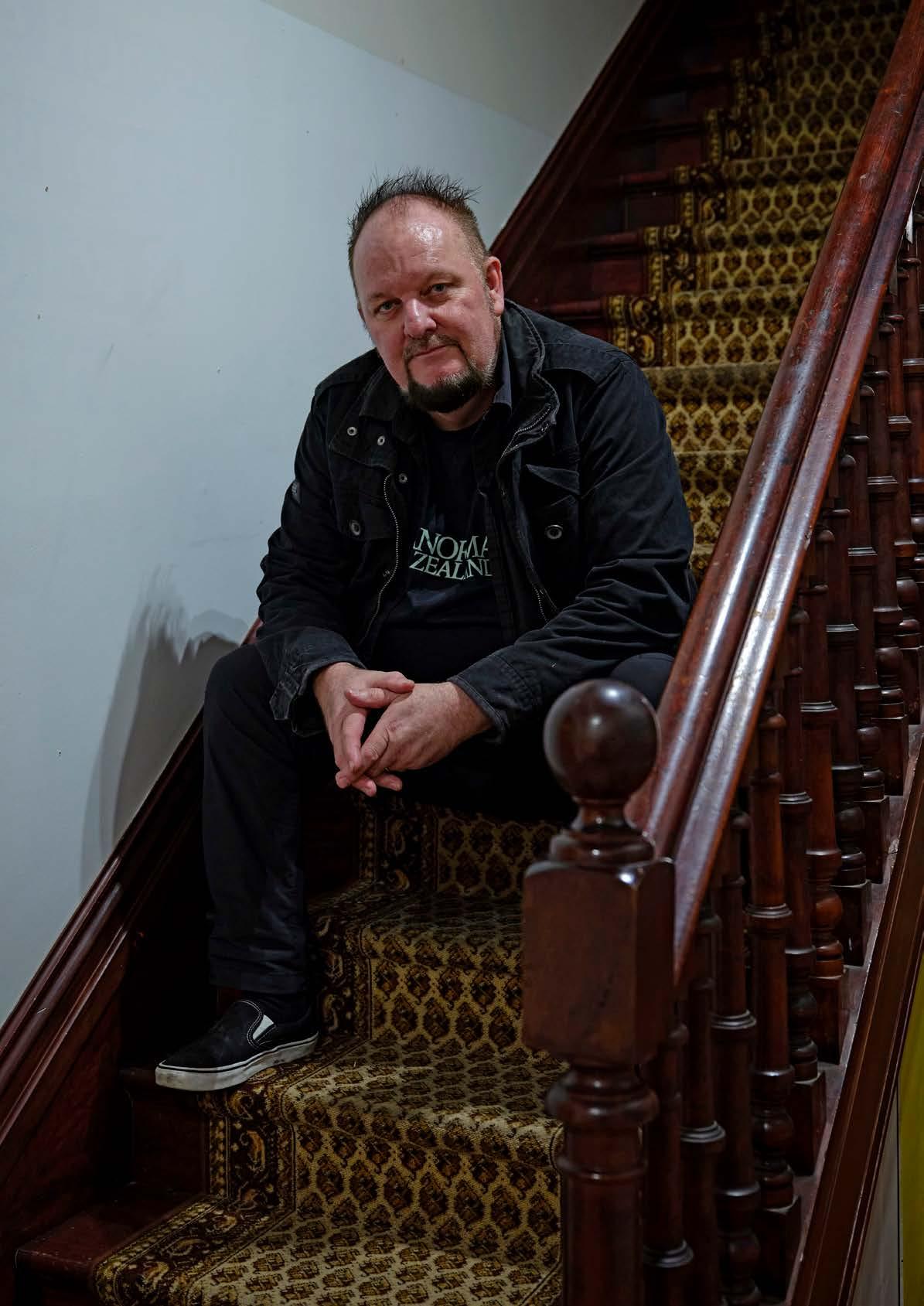
MYSTERIES OF NEW ZEALAND 4 WINTER 2024 PHOTOGRAPHER MARK SMITH
NGĀTEA
did aliens visit the Waikato?
BY BEN WHITTACKER-COOK
IN SEPTEMBER 1969, the tiny town of Ngātea on State Highway 2 in the Hauraki Plains wrote its chapter in UFO folklore when, one morning, a farmer discovered a mysterious circle of burnt mānuka scrub. Previously vivid green trees, now tipped with silver, had died overnight, while three deep v-shaped impressions set in a uniform triangular formation lay within.
In his book New Zealand Mysteries, Scott Bainbridge explains, “Before long, reporters, UFO enthusiasts and picnicking
families began arriving in droves just to catch a glimpse of this phenomenon.”
Scientists at the time described the scene as “being blown up from the inside out”, and landowner and farmer Bert O'Neill's life changed overnight. Was this evidence of extra-terrestrial life?
More sensible explanations suggested herbicides blowing over from the neighbouring property, passing animals, or just an elaborate prank.
“Today, there are lots of people who think they can explain how it happened. The case

is very rare. I certainly delved into whether or not there had been any previous news stories about those sorts of things, and this was a first,” Scott told Directions. Investigators pointed out that it's hard to achieve a perfect circle through spraying, while the three grooves were root-deep and so uniform that they had to be made mechanically. Drones didn't exist then, and the case occurred years before the global crop circle hoaxes of the 1980s and 1990s. There’s also no suggestion of foul play from O'Neill. “The owner just stumbled upon it accidentally and thought it was something a little bit odd.”
Scott suggests the mystery could have been artificial or something that existed in the plants. “But it would have taken a while for the plants to get to the point that they died. This was sudden. It's a logical explanation, but the neighbours said that [herbicides] weren't the case. As for the triangular markings in the ground, I really don't know what they were. It's a fascinating story, and I remain impartial.
“In terms of New Zealand mysteries, it doesn't rank as one of the most wellknown, but it's absolutely my favourite.”
Click here for the full story
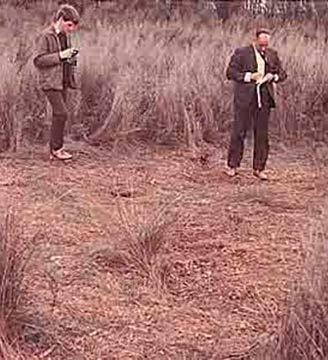
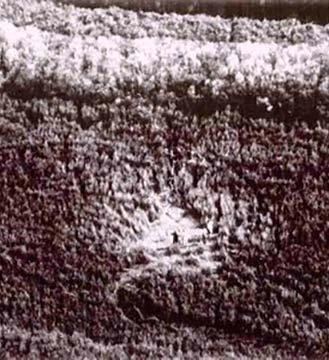
FEATURE 5 aadirections.co.nz PHOTOGRAPHER TREFOR WARD PHOTOGRAPHS COURTESY OF WAIKATO TIMES

TARAWERA’S
a portent of disaster
BY JO PERCIVAL
ONE OF NEW ZEALAND’S most famous mysteries coincides with the demise of our most iconic natural attraction.
In the 1800s Lake Tarawera was a hotspot for tourism, with visitors from around the world coming to admire the scenic wonder that was the Pink and White Terraces. But one day, an eerie sighting on the lake changed everything.
Dave McGrath, operator of Te Wairoa
The Buried Village in Rotorua is familiar with the Lake Tarawera spirit waka story,
having grown up on the shores of the lake.
“On 31 May a tour group, led by renowned Māori guide Sophia, was heading out on the lake to visit the Pink and White Terraces ,” Dave says. “All the occupants of the tour boat spotted a Māori war canoe, a waka toa, but locals knew there was no war canoe on the lake and no such vessel had ever existed in the area.”
Several eyewitness accounts tell of seeing a double row of occupants in the waka toa, one row paddling and the other
standing. “According to some Māori eyewitnesses, the waka occupants wore huia and white heron feathers in their hair which was traditional for marking death. Sophia knew that something wasn’t right straight away. She called out to the people in the waka toa, but no-one responded,” Dave says.
When informed of the mysterious sighting, the Tohunga (priest) at Te Wairoa knew that it was a portent of disaster. “He said that the sighting was of a waka wairua – a spirit waka – and he predicted that the whole area around the mountain would be devastated,” Dave says.
Eleven days later, Mount Tarawera erupted. Three of the villages surrounding the lake were obliterated and more than 150 people were killed. The Pink and White Terraces were also destroyed.
If it were not for the multiple accounts corroborating the sighting of the waka toa, the story of the phantom canoe might have been passed off as legend. As it stands, the foreshadowing of the Tarawera eruption remains one of the spookier unexplained mysteries of Aotearoa.
Click here for the full story
6 WINTER 2024 MYSTERIES OF NEW ZEALAND

KAIKŌURA
considering a close encounter
BY VANESSA TRETHEWEY
UFO SIGHTINGS are a fascination for award-winning artist Caryline Boreham. Since launching her research in 2016, Caryline has taken a deep dive into our most legendary UFO encounters, from the 1909 ‘great airship flap’ to the muchpublicised 1978 Kaikōura lights. She has trawled through countless archival records, both civilian and military, and transformed her findings into thought-provoking photographs, moving images and zines.
Caryline has had three exhibitions showcasing this work and is working on a book about it. But don’t expect to see pictures of flying saucers and aliens; instead,
she offers a fresh perspective, honing in on the viewer’s confusion – or conviction –surrounding their close encounter.
“I’m interested in the psychology of seeing, in how these sightings were described,” says the Whitecliffe fine arts lecturer and multi-media artist. “For me, it’s not about whether UFOs are real, it’s about the human element. My work explores how people have reacted to encounters, and what the official response has been.”
Caryline’s interest was sparked after attending “an unassuming” UFO meeting in Auckland, which explored the teachings of a space-being called Maitreya
who telepathically channelled messages through Scotsman Benjamin Creme.
“It struck me how different Kiwis are in the way we approach things. In America, everything is sensationalised, with sightings often linked to alien theories, but New Zealanders are more circumspect.”
The New Zealand Defence Force began keeping records on UFO sightings in 1952, and since then have accumulated vast tomes of eyewitness accounts, visual descriptions and correspondence.
“There was a flurry of letters in the 50s and then it calmed down for a bit. After the Kaikōura lights, things fired up again. Robert Muldoon investigated that one, it was our biggest sighting. A film crew went up in a plane to record it and came back really shaken, but now the military says it was Venus.”
What does Caryline think? “I’m on the fence,” she admits. “When I first started this project I was more of a believer, but now I’d call myself a curious sceptic. It’s not that I don’t believe there are other life forms out there – I think it’s likely given how huge the universe is. But are they visiting us? I don’t know.”
Click here for the full story
7 aadirections.co.nz FEATURE
DAVID COWLARD
PHOTOGRAPHER
LARNACH
clearing the ghost stories
BY JO PERCIVAL
THERE ARE MANY ghost stories attached to New Zealand’s only historic castle. The sad history of the founding family and the 1870s Gothic Revival architecture of Larnach Castle lend themselves to supernatural tales, but none of the most repeated stories are based on fact.
“The stories around the castle are based on rumours,” says David Mills, one of Larnach Castle’s most experienced tour guides. “For example, there’s a legend about a blood stain on one of the baths upstairs. But the bath is original marble and there are no blood stains – there aren’t even any rust stains – so I don’t know where people have got that idea from.”
Many of the ghost stories tell of the restless spirits of William Larnach, his first wife, Eliza, and daughter Kate haunting
the rooms where they supposedly died, but David debunks these, too. “No member of the Larnach family actually died at the castle,” he explains.
David has experienced uncanny coincidences at the castle himself. “I’m a fan of classical music and I drove to work one day listening to the Pearl Fishers Duet It wasn’t finished when I arrived and turned off the car,” he says. “I came into the castle, clocked in and was doing some checks on the first floor. When I walked into the music room, that same song was playing at the exact place where I’d left it in the car. I think

someone had left music playing from a dinner the night before, but it was a very strange coincidence.
“There have been moments like that where you get a bit of a feeling up the back of your neck.”
Many people have heard the spooky stories of Larnach Castle before they visit for a tour. “I will have people who say that they want to leave because they’ve got a bad feeling. That happens quite a lot,” David says. “Sometimes I get children who don’t want to go in because they’ve heard the house is haunted. I’ve sat them down and said ‘look, if there is a ghost here – and I haven’t seen one but I’m not discounting it – they’d probably be very pleased with what we’ve done to the house, so there’s nothing to worry about.’”
Click here for the full story

PHOTOGRAPHS SUPPLIED 8 MYSTERIES OF NEW ZEALAND WINTER 2024
COROMANDEL’S
is there a cryptid on Mt Moehau?
BY EMILY DRAPER
DO WE TRULY KNOW what could be lurking out there in our native bush?
One New Zealander looking to unravel that mystery is filmmaker and paranormal investigator Marc Coppell. After many years spent overseas investigating mysterious phenomenon, Marc returned to Aotearoa to investigate mysteries closer to home. From the beginning, one of his main areas of interest was the Coromandel ranges, deep in the foothills of Mt Moehau.
“I wanted to explore historical areas in the wild. I discovered Māori folklore talking about these giants that they were terrified of. I had no idea we even had something called the Moehau Man.”
Mt Moehau (also called Te Moengahau-o-Tamatekapua, the windy sleeping place of Tamatekapua) is a sacred mountain of the Marutūāhu, a collective of five iwi in the Hauraki region. Many important chiefs are buried there, and it is also said in Māori mythology to be home to both Patupaiarehe, fairy-like supernatural beings (he iwi atua), and moehau (or maeroero), a large bipedal creature covered in a thick coat of hair.
“When I was out there, I would hear footfalls and have the feeling of being watched. Sometimes things [were] getting thrown at me. I’ve recorded strange voices. I even found large footprints.”
After multiple experiences like this, Marc sought out others who had witnessed similar phenomena. “People have contacted me and many of them are very troubled with their sightings. Some of them don't want to go back to the wild again. It's happened to people across the board; we're talking about academics, skeptics, children, hikers, campers, just people who are going to areas that are very remote away from the general public."
Addressing the scepticism that often surrounds his work, Marc acknowledges many people find it difficult to believe the phenomena he investigates.
“People laugh at me, say this is crazy. But they just want to protect their own bias. They don't ever investigate it themselves. When you actually get out there and investigate this stuff, and you put a lot of effort into it, your odds of having an experience go right up,” Marc says.
Click here for the full story

FEATURE 9 aadirections.co.nz
VICTORIA BIRKENSHAW
PHOTOGRAPHER
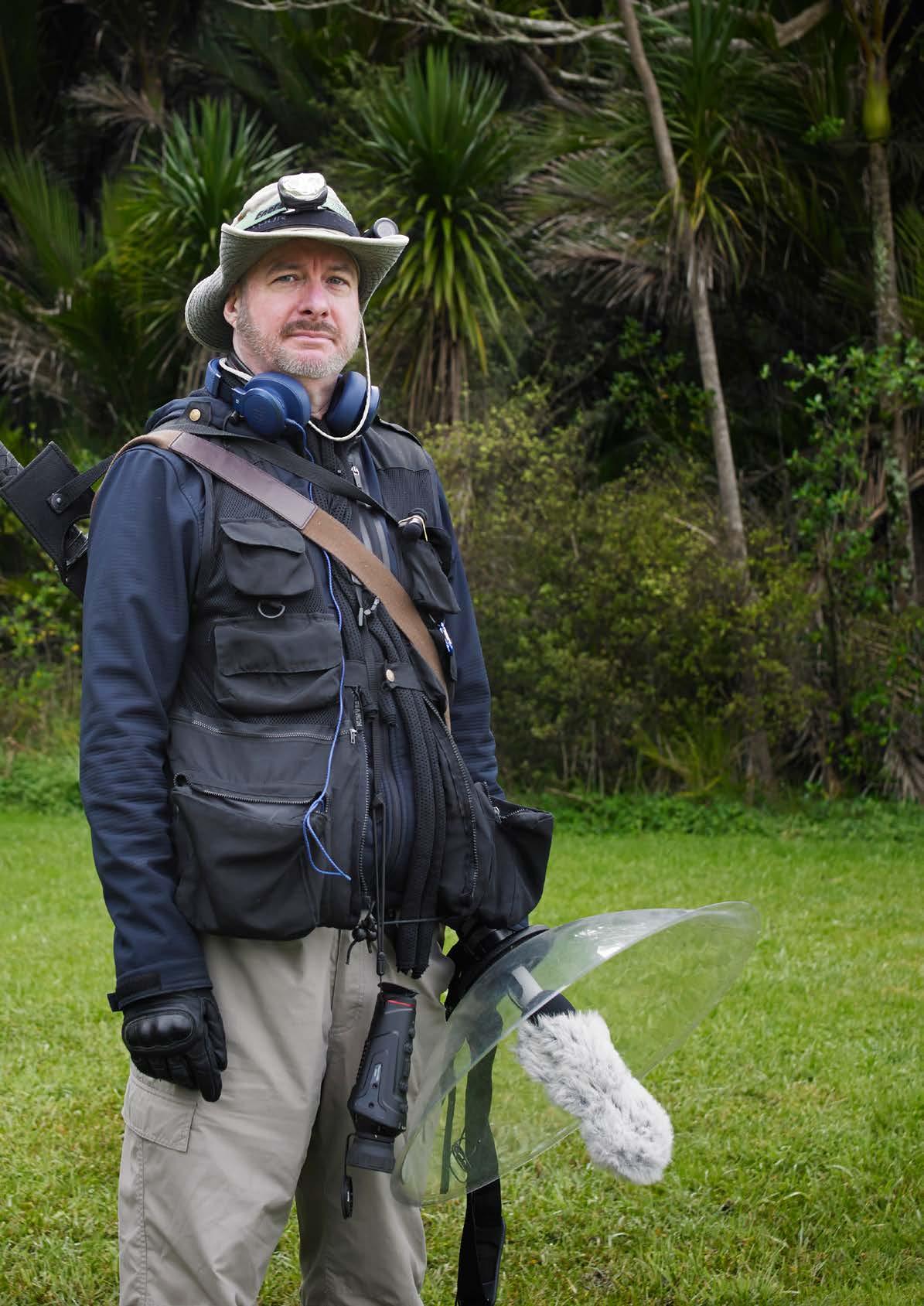
10 MYSTERIES OF NEW ZEALAND WINTER 2024
Wheel LOVE
Ray Robertson’s Gray Coach has been in the family for 100 years.
BY FIONA TERRY
WHEN FARMERS DONALD and Marion Robertson bought their Gray Coach in 1923, they could never have imagined the extent to which it would enrich the lives of generations to come.
Initially, the Robertson family of seven would squeeze into the narrow four-seater to make the 21-mile trek off their farm Boggawalla on the West Coast to the nearest town of Ikamatua.
Over the years Donald put the vehicle to farm use, jacking up the wheels on blocks to drive a plough via a winch system, turning the vehicle into a truck by cutting the cab off, and using the roofing section as a shed for a water pump.
It was only in 1972, when Donald passed away and the remains of the vehicle were gifted to grandson Ray Robertson (then 17) that the extent to which the vehicle’s parts had been scattered became evident.
Most were rusted and the timber of the body had started to rot, but Ray and his father and uncle decided to take on the restoration. They thought the project would take five years or so…
By 1996, with nearly 3000 restoration hours under his belt and his father having passed away, Ray lost motivation and decided to take a break.
Then, in February 2007, his eldest son Chê asked how long it would take to finish the job.
“I told him a couple of years,” says Ray. “Then he asked how long it would take if he helped me because he wanted to use it for his wedding car. That was basically how he told me he was getting married!”
Six months before the wedding, Ray had a motorbike accident that left him with a broken wrist and dislocated shoulder. Instead of scuppering their plans, friends and family ploughed in to help push the project on.
The vehicle was finally finished and signed off as roadworthy just two days before the wedding. Ray proudly chauffeured the newlyweds on their special day.
Click here for the full story
Read more motoring online
Things to note if you’re new to EVs
What’s so thrilling about these Japanese cars?
A call to treat driveways like roads

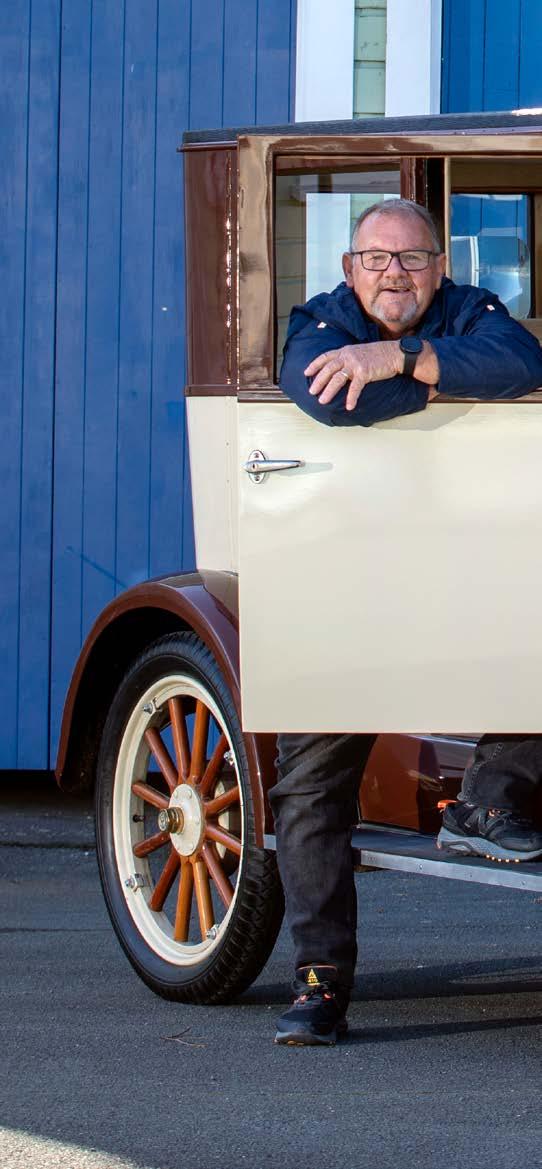
MOTORING 11 aadirections.co.nz
PHOTOGRAPHER TIM CUFF

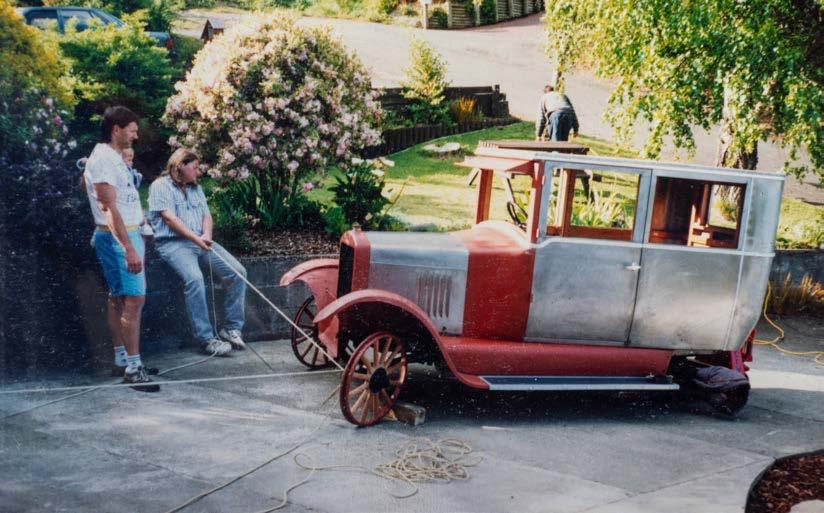

12 WINTER 2024
Comparing our drink-driving toll with Australia’s shows that we should be doing a lot better.
BY MATTHEW TSO
In 2022 there was a spike in drunk driving deaths on New Zealand’s roads; the toll of 124 was the worst in a decade. The same year, 65 people died in similar circumstances in Queensland and New South Wales’s toll was 36. Considering New Zealand has 200,000 fewer people than Queensland and three million fewer than NSW, those numbers are alarming.
Our rate of drunk driving deaths per capita was twice and six times that of those respective Australian states in 2022.
Cop-stops and interlocks
Drink- driving researcher Gerald Waters says there’s no conclusive reason as to why New Zealand’s death rate should be higher than Australia’s. On the surface, the two countries share social and cultural similarities. But there are differences in the way authorities on each side of the Tasman approach drink driving.
He believes missed roadside breath alcohol testing (RBT) targets and the patchy use of alcohol interlock convictions are contributing factors to New Zealand’s tragic drink- driving record.
Many road safety advocates, including the AA, see RBTs as a crucial anti-drink driving measure. It is a visible deterrent to would-be drink drivers and also a final line of defence to catch those over the limit in the act. Although Police aim to test three million Kiwi drivers for alcohol each year, 2023 was the first time in eight years that was achieved.
Gerald believes low levels of testing since the mid-2010s have contributed to a culture of people thinking they can get away with drinking and driving. For RBTs to be an effective deterrent, he
says, drivers need to encounter them frequently. “Knowing there’s a high chance you’ll get caught and that the consequences will have a big impact on you is part of the deterrent.”
New Zealand also needs to be making better use of alcohol interlocks – electronic devices linked to a vehicle’s engine that won’t allow it to start if alcohol is detected on a user’s breath. They are fitted to the vehicles of people who have been convicted of drink driving and have been in use in Australia since the early 2000s and in New Zealand since 2012.
While both jurisdictions impose interlock sentences for serious drinkdriving convictions and on recidivist offenders, many Australian states require first time offenders to install an interlock while New Zealand does not and has more avenues for avoiding one.
A study, funded by the AA Research Foundation, found there was significant variation in the way courts in different regions impose interlock sentences.
“We looked at interlock convictions in New Zealand (in 2018) and found that 50% of people eligible for an interlock weren’t getting them,” Gerald says. “Health reasons, not having a New Zealand driver’s license and not owning a vehicle were all reasons they were not being handed down.”
Tougher penalties across the ditch
Dimitra Vlahomitros is an Australian road safety expert with the National Roads and Motorists' Association (NRMA) which advocates for road users in New South Wales and Australian Capital Territory.
She is concerned the RBT numbers have fallen away significantly following
the Covid-19 pandemic but says New South Wales uses other measures to strike a balance between deterrence and education. The state’s approach to those caught drink driving is tougher.
“We’re trying to really establish a separation between drinking and driving as opposed to ‘you can have ‘x’ amount of drinks per hour’ - because that’s a bit of a guessing game.”
For those who get behind the wheel after drinking, New South Wales imposes more severe penalties than New Zealand.
There’s always more to do
Dimitra says while drink driving has been socially unacceptable for a long time in New South Wales, alcohol is a factor in about 17% of road fatalities in the state. In New Zealand it’s higher, with 20-30% of road deaths involving a driver over the legal alcohol limit.
While she says there is no silver bullet to curb drink driving, it’s necessary for authorities to continue evolving policies and practices to keep shrinking the number of drink drivers.
“We’re still having this conversation about drink driving. It seems crazy that [roadside breath testing] was first introduced in the 1980s and yet we’re still fighting the same fight of making sure people know they’ll be caught drink driving.
“We need penalties that are going to change people’s behaviour and interventions like alcohol interlocks, specialist alcohol courts and rehabilitation treatment all have a role to play in stopping people drinking then driving and putting so many lives at risk.”
Click here for the full story
13 aadirections.co.nz MOTORING
PHOTOGRAPH SHUTTERSTOCK.COM

14 WINTER 2024 DRINK DRIVING
A Wintery Wilderness
We thought: the Catlins, that should be awesome – all those sea lions, and rare little penguins, massive elephant seals lolling about, not to mention seabirds. It would be a winter wildlife safari.
At every location, whether lonely Cannibal Bay or Surat Bay, Nugget Point, Curio Bay or Waipapā Point and all points in between, our Attenborough style close-ups with sea creatures failed to materialise. But it made not one jot of difference to our enjoyment of the Catlins. It was still awesome.
What a fantastically unspoiled, weather-beaten place. Landscapes
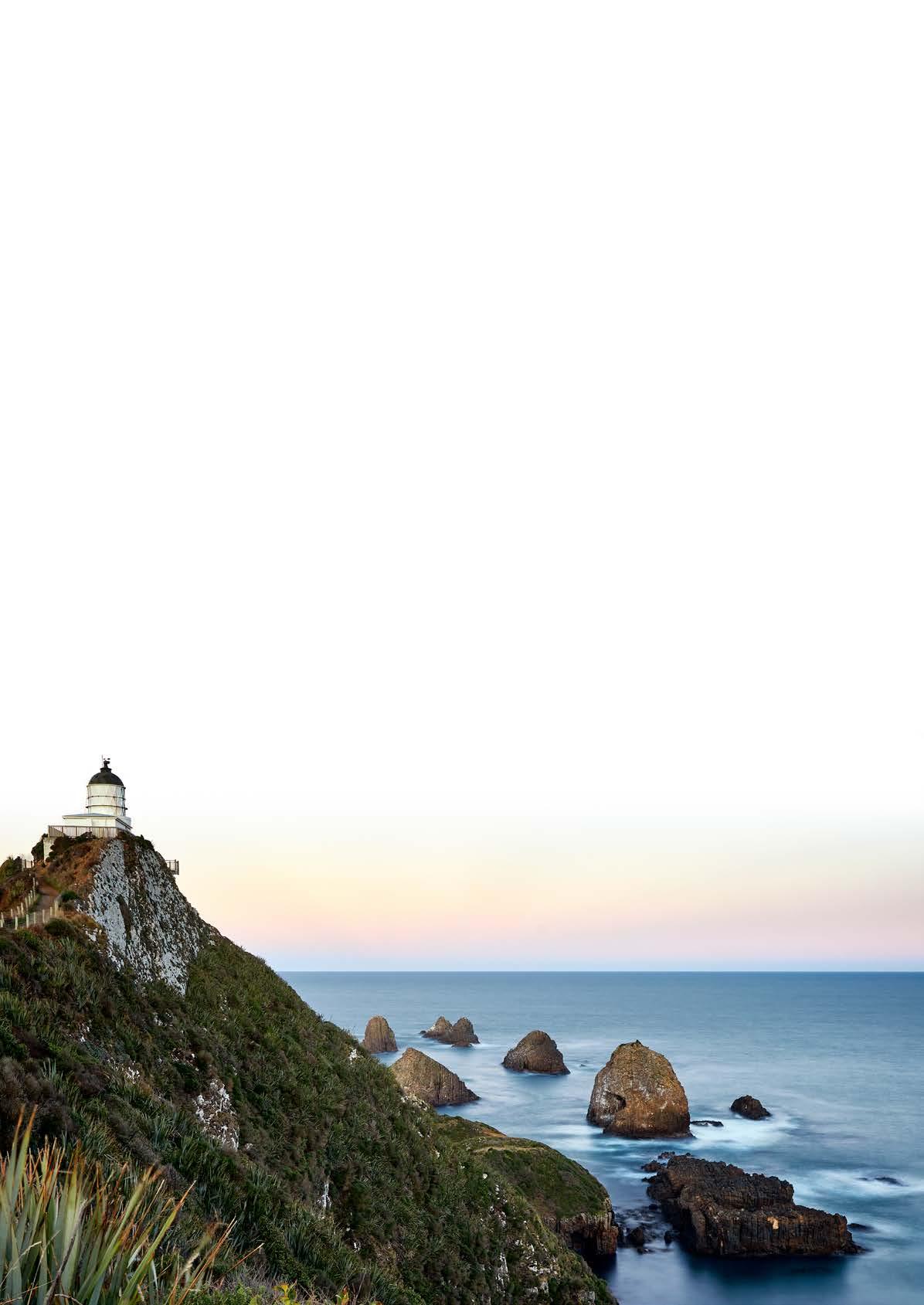 BY MARK MEREDITH
BY MARK MEREDITH
shaped by roaring southerly gales and pounding seas have sculpted the coastline into a series of cliffs, caves, rocks stacks and empty, wide sand beaches nestled between windswept headlands where lighthouses paint the inky blackness.
Inland, we found lonely rural settlements dotted amidst picturebook farmland rolling over countryside studded with sheep; along riverbanks, tracts of ancient forest were mirrored on glassy surfaces. All the while the distinctive winter light painted the scenery in a way that presented endless photographic opportunities.
This was a drive to take time over and savour, speed dial turned way down, soaking in the silence and enormous night sky; basking in that privileged feeling of knowing we were in a special place.
In the Catlins Coastal Rainforest Park we went looking for the justly famous, beautiful waterfalls of Purakaunui and McLean on well-managed tracks meandering beneath towering rimu, rātā, kāmahi and silver beech. It felt primeval walking through the moss-covered, dripping rainforest, under giant tree ferns and blistering red bark of fuchsia limbs, following the sound of water to the cascades.
Not far away, Nugget Point lighthouse, the face on any number of Catlins and southern New Zealand travel brochures, didn’t disappoint. It’s the lighthouse’s dramatic placement on a narrow, hilly promontory looking out over a series of conical rocks, the nuggets, poking out of the sea as though scattered by the sweep of a giant hand eons ago, that sets it apart from other sentinels. At sunset the last
TRAVELLER 15 aadirections.co.nz
PHOTOGRAPHER MARK MEREDITH
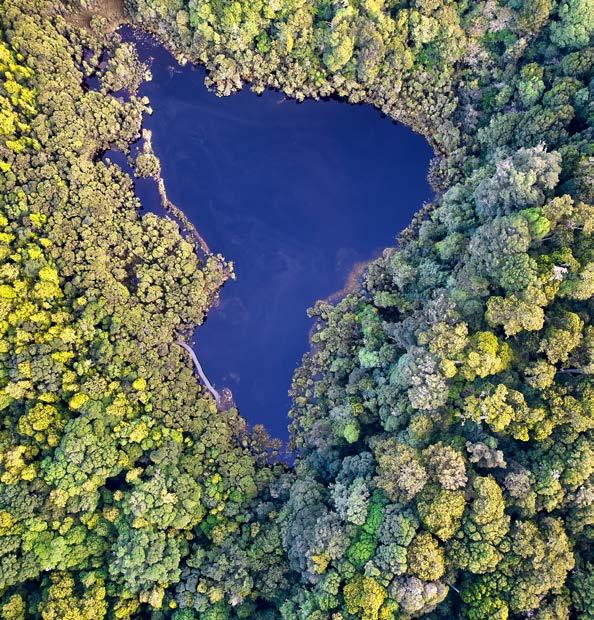
rays of sun strike the nuggets; fiery orange teeth glow on a darkening sea.
Curio Bay caters almost exclusively to holidaymakers, comprising just a few dozen holiday homes, guesthouses and a campsite. In winter it was deserted. At low tide a petrified forest, some 180 million years old, can be examined. Signs told us of a yellow-eyed penguin colony, one of the rarest of all the penguin species, but we didn’t see any.
At this stage of our Catlins journey we had almost reached the most southerly point of the mainland. That exact spot is a short drive from Curio Bay at Slope Point. We took our selfie on the cliff by the signpost pointing to the equator north and Antarctica the other way; nothing but the wild ocean stretched out between us and the icy continent.
Nearby, a much-photographed line of macrocarpa trees has been blown and shaped in extraordinary fashion, like a huge head of hair slicked flat by the gel-effect of incessant gales. It’s a reminder, if one were needed, of how the great Southern Ocean dominates every facet of life here.
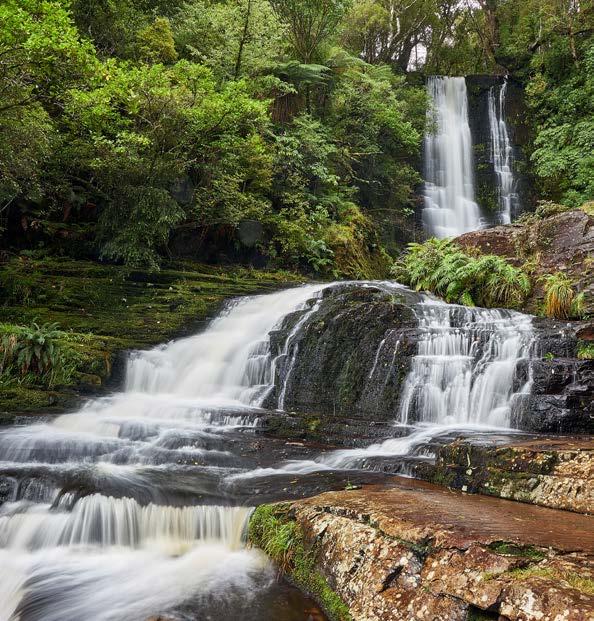
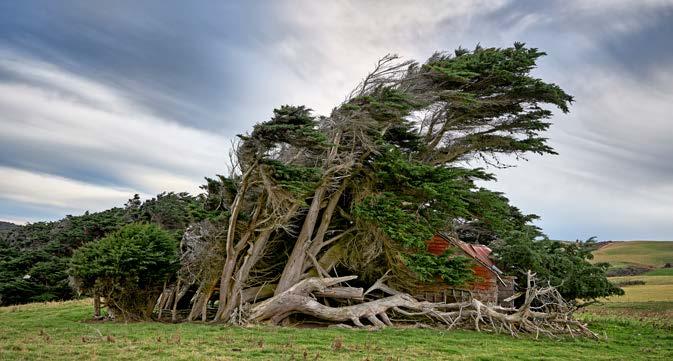
Where are South Island’s best hot pools?
Experiencing Kaikōura’s new zip line
Tuscany in Italy is something special
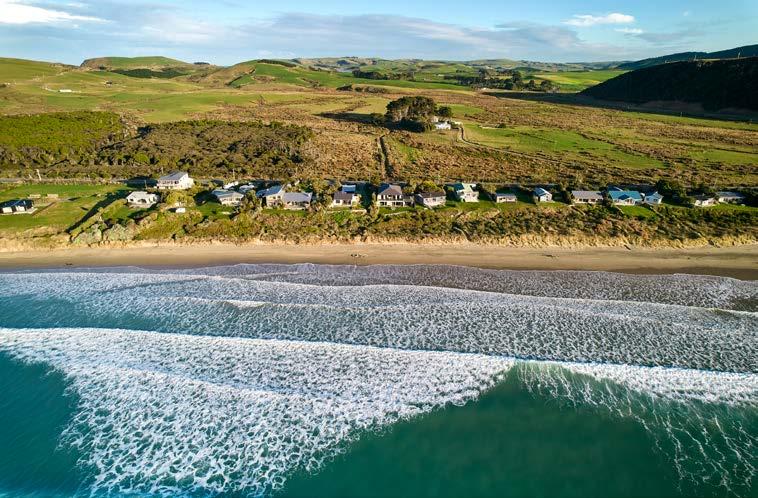
16 WINTER 2024 THE CAITLINS
Click here for the full story
Read more traveller online
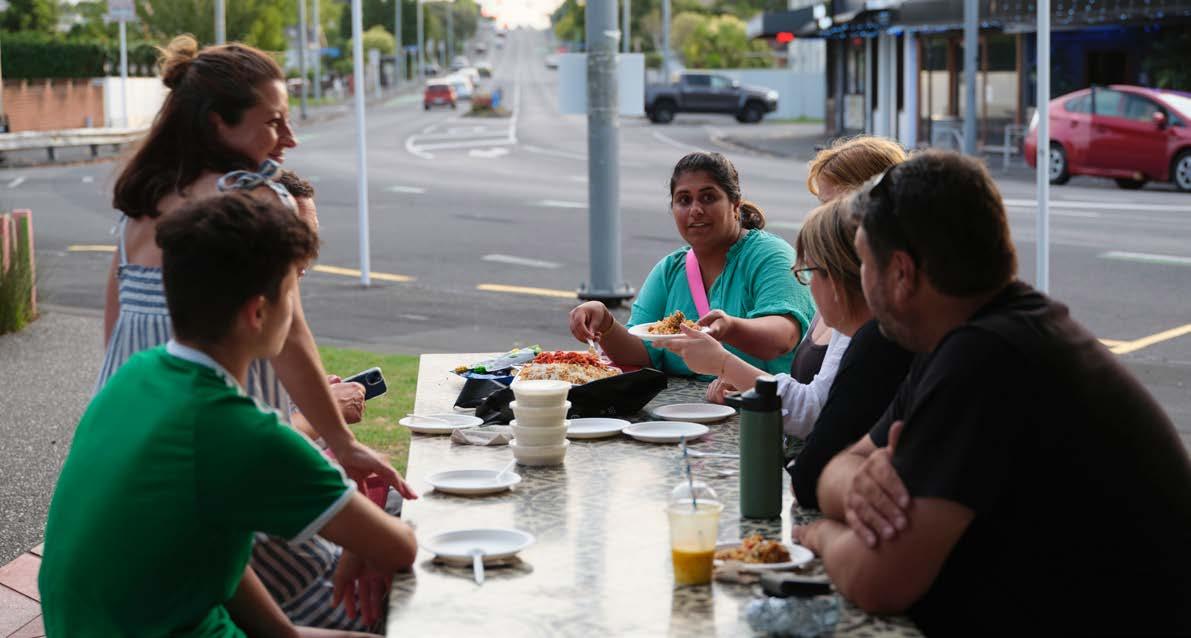
AUCKLAND FOOD TOUR
On the Spicy Side
BY EMILY DRAPER
The sky is pink-orange and the air is thick with spice. Cumin, garam masala, cardamom, garlic.
Handwritten menus rest easy against storefronts, while shop owners shuck coconuts on the roadside, sitar music escaping tinny radios at their feet. Families gather at worn picnic tables, feasting from takeaway containers in the dusk.
We are in Sandringham, a mere 10 minutes’ drive from Auckland’s CBD, with Perzen Patel: food writer, entrepreneur, owner of Dolly Mumma curry pastes, and our guide for the walking food tour this evening.
Our first destination is Madras Café. Nestled around a small plastic table, we are served steaming plates of dosa: thin, crispy crepes with chutneys and sambar. We try ghee podi roast dosa (crispy dosa with red masala), and rava masala dosa (dosa made with semolina with potato stuffing). The first is light and flavourful, the second filling and moreish.
We also sample idli, another popular South Indian breakfast food, made of fermented lentils and rice. Perzen is full of stories and knowledge about the rich history of South Indian cuisine – it makes for great conversation while we eat.
cheese and spices between slices of deep-fried bread. From the other, Perzen hands around hot cups of chai. Greeted by warm, flavourful notes of nutmeg, cinnamon and cloves, we look at each other, eyes wide in agreement. Not a single drop is wasted.
We soldier on: our next stop, a humble eatery called ‘Eggs n More’. Both dahi puri and pani puri are small, bite-sized snacks, consisting of round, puffed crispy shells (poori) filled with fresh chutney.
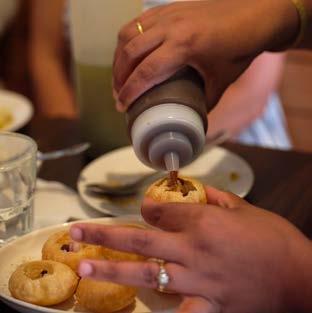
Our next stop is down a suburban side street, in a small carpark behind a doctor’s office. In this unexpected location we discover two food trucks. One serves us a Mumbai-style toasted sandwich with onion, tomato and spices, and a bread pakora:
Other chaat on the table include aloo tikki chat: a crispy potato patty flavoured with spices and topped with the same yoghurt and chutneys, and bhel puri, a crunchy combination of puffed rice, vegetables and tangy tamarind.
With the sun starting to set behind the skyline, Perzen ends the evening on a sweet note, with assorted mithai (sweets): diamond-shaped kaju katri (fudge made with cashews and sugar), silver kesar pista (rolls of condensed milk and pistachios), and bright red coconut barfi (squares of desiccated coconut, milk, cream and sugar).
It’s been two hours of eating, drinking, walking, and learning –not only about South India’s cuisine, of which we’ve barely scratched the surface – but also about the incredible culinary experiences we can find in our own backyard, when we take the time to look.
Click here for the full story
TRAVELLER 17 aadirections.co.nz PHOTOGRAPHER MARK SMITH

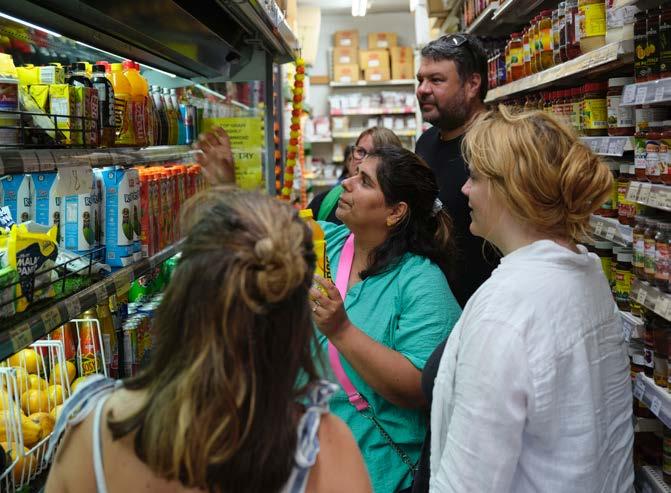
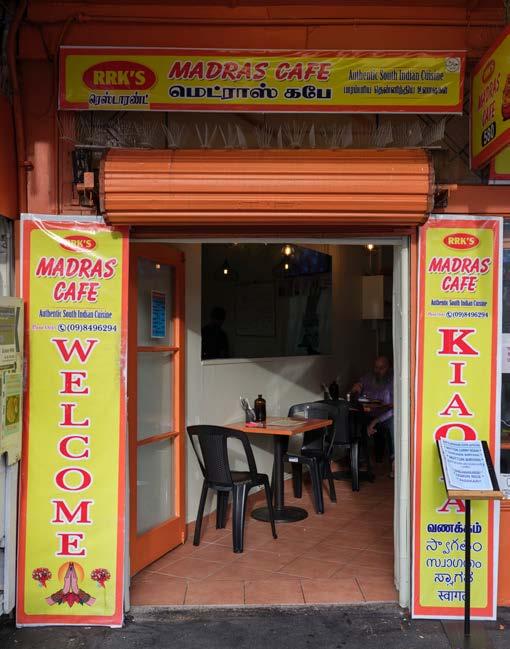
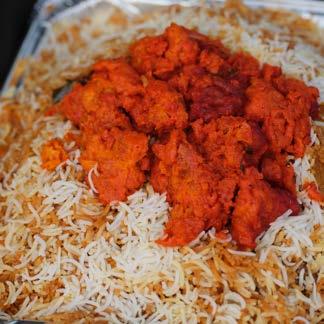
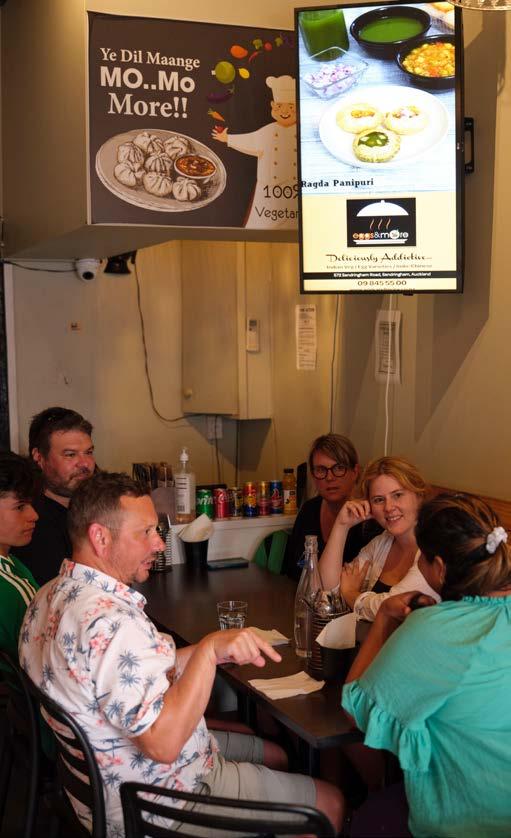
18 WINTER 2024 SUBURBAN AUCKLAND

AA Directions has an incredible trip for two to Tahiti to giveaway thanks to Air Tahiti Nui and Tahiti Tourisime. TO BE IN TO WIN, ENTER HERE!

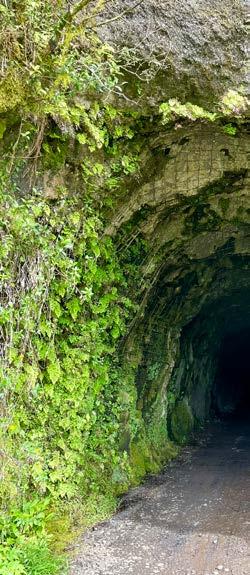
TAHITI SHORT, SWEET & STICKY
BY JO PERCIVAL
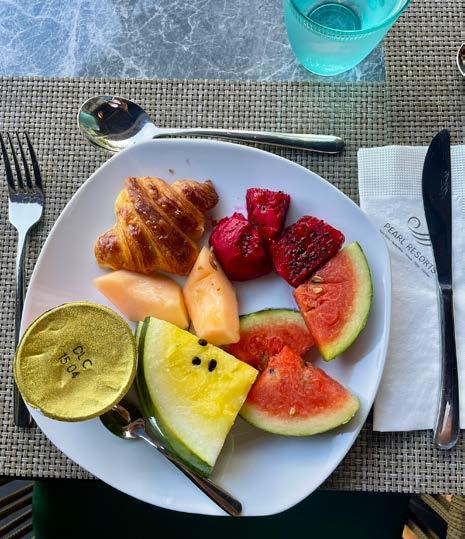


TRAVELLER 19 aadirections.co.nz
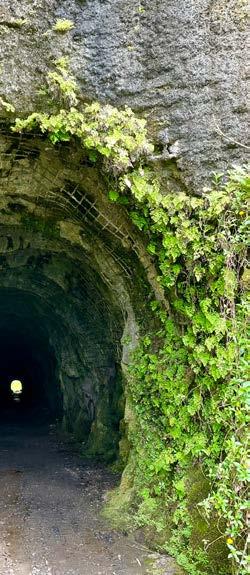
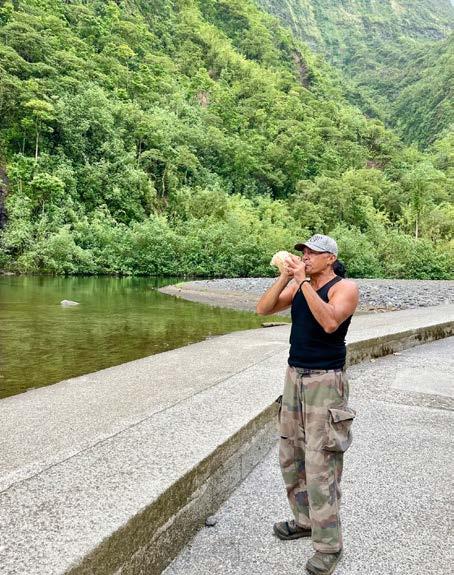
Tahiti is hot. A syrupy, clinging heat sits close and consistent no matter what time of day or night. I’m in Papeete, the gateway to the numerous archipelagos of French Polynesia.
From the coast, the mountainous peaks of Tahiti appear impenetrable. In fact, there is only one road across the centre of the island and only one hand-dug tunnel that provides access to the southern coast. Today, I am travelling there, on board a 4x4 safari.
The tour takes us into the Papenoo Valley, lush with greenery and flowing with a multitude of rain-fed waterfalls. Our guide stops to show us things of interest
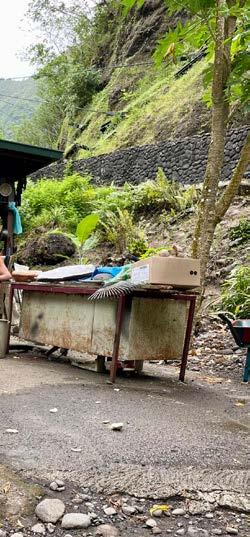

along the way. By mid-morning my skin is coated in a paste of off-road dust, sweat and sunscreen and the prospect of a dip in the river is beyond appealing. I hobble over smooth boulders and plunge into the deep green water of the swimming hole.
Lunch is at a hotel in the middle of nowhere. Well, a former hotel. The ramshackle restaurant sits adjacent to a long-abandoned accommodation complex; industrious locals have taken over the site to cater tour groups like ours. We’re delivered plates with simple poisson cru (raw fish in coconut milk) and chicken with locally grown spinach-like api leaves. It’s delicious.
After a day in the jungle, I’m keen to get

out on the water. The Moana Explorer is a triple-hulled va’a or sailing canoe built from fibreglass to traditional design; I wade out to clamber onto the stretch of mesh strung between its hulls. My guide, Steve, assumes his paddling position in the central hull and we set off, skirting the edge of the reef to head for the open ocean. Once we’re clear of the headland the breeze picks up. Flying fish break the surface and skitter in front of our bow. Tahiti grows smaller behind us and clouds shift to reveal the peaks I’d been amongst the day before.
Click here for the full story

20 WINTER 2024 TAHITI
PHOTOGRAPHER JO PERCIVAL
Home & Living

What on Earth?
BY KRIS HERBERT
Nick McQuoid’s obsession with the Futuro House began when he was five years old.
“I used to beg my dad to drive past the ‘spaceship’ in New Brighton,” he remembers.
It was an obsession that stuck. Nick purchased his first Futuro in 2012 and he is now part of a group of global fanatics of the rare 1970s icon.
His latest Futuro, which he restored himself, is now an award-winning Airbnb at Okoha, in Canterbury, and is listed as a Category 1 Historic Place.
Fewer than 100 Futuros were made, twelve in New Zealand. Nick has owned three of them. One he sold to a
museum in Australia, another is awaiting restoration and the third is available for anyone to experience on his five-acre Okoha property, which also features a games room, a retro caravan, a sleepout, a pool, a spa and a sauna.
He and a friend restored it themselves. “It was literally like trying to rebuild a superyacht – they are made from the same materials – but trying to do it affordably,” Nick says.
They stuck as close as possibly to the original architect’s vision, complete with purple walls, red carpet and 1970s decor.
The interior feels surprisingly spacious, with high ceilings and built-in furniture. There are two bedrooms and a
compact bathroom. The bed in the main room slides away to create more space.
Nick says guests of his generation remember the Futuro from its prominent location in Christchurch’s New Brighton. “They come here and it’s like a blast from the past.”
Click here for the full story
Read more home & living online
Slow down in Auckland’s Wintergardens
How to cut costs in winter
HOME & LIVING 21 aadirections.co.nz
PHOTOGRAPHER NANCY ZHOU HOME PROFILE
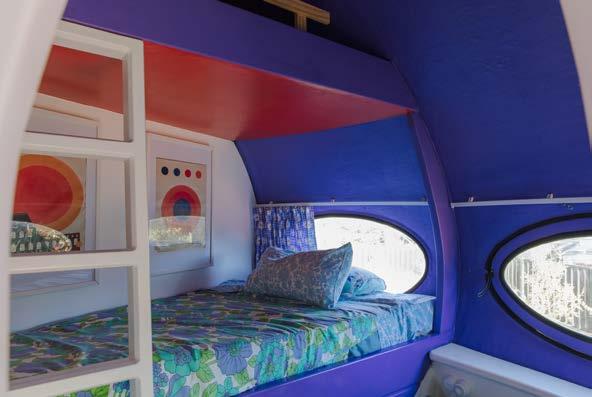
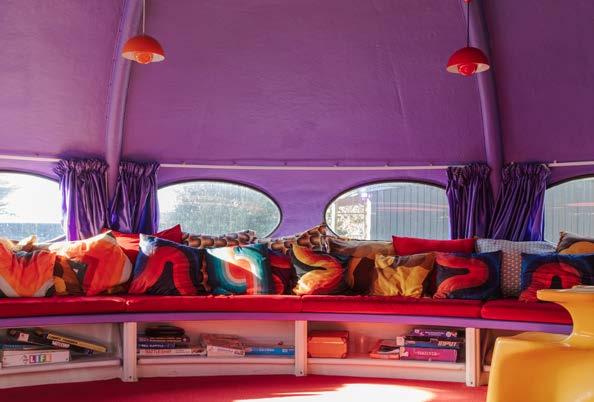



UFO HOUSE 22 WINTER 2024
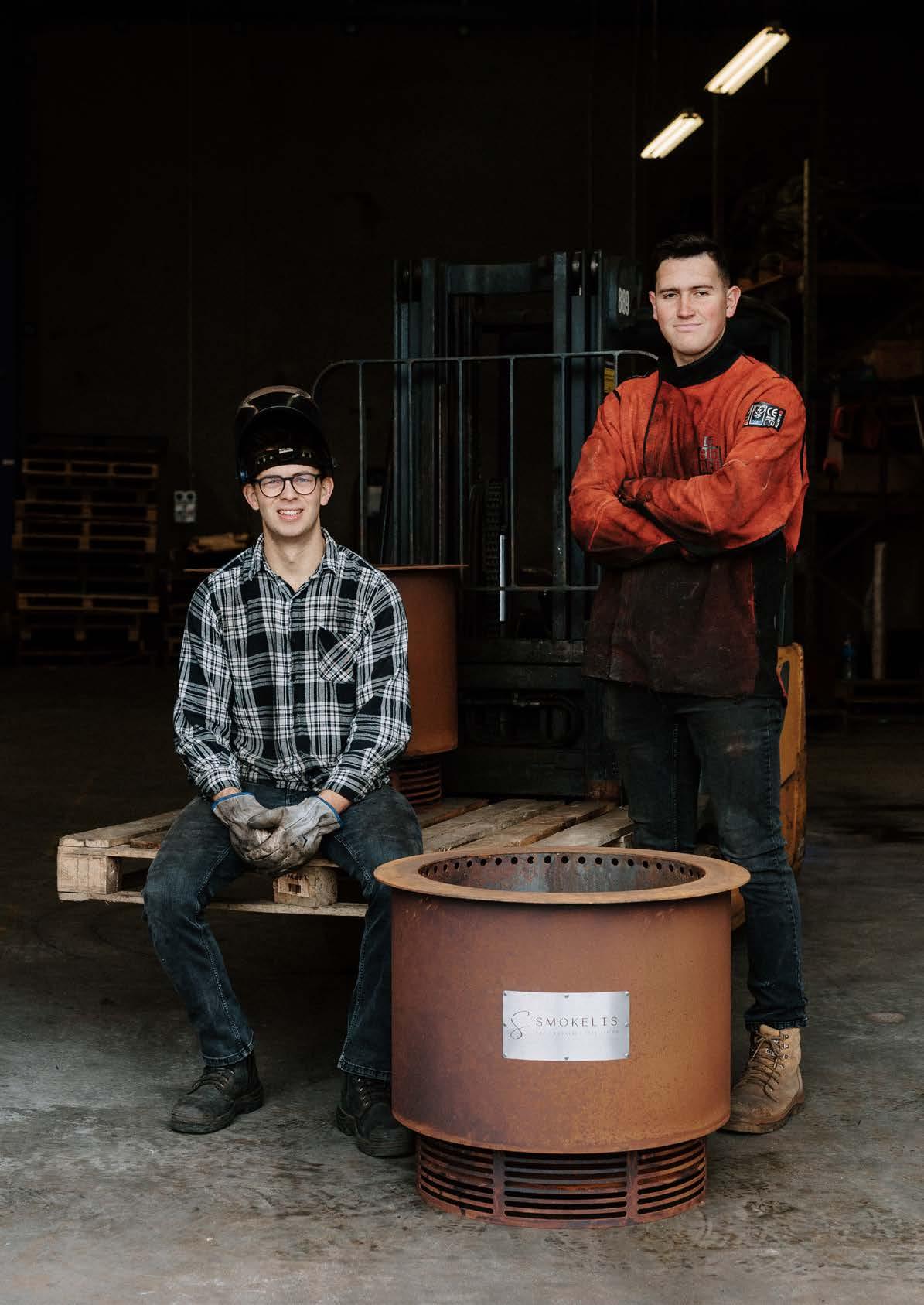
23 aadirections.co.nz HOME & LIVING
Smokelis owner Luke Powell (left) with co-worker, Harrison
MEET THE MAKER
SMOKELIS
Is there anything cosier on a winter evening than gathering around an open fire? Luke Powell, owner and founder of Smokelis: The Smokeless Fire Pit Co., doesn’t think so.
Waikato-based Luke discovered a gap in the market when investigating braziers and fire pits for his own home.
“I’ve always been annoyed with traditional outdoor fires – how you light this huge fire and burn through a wheelbarrow of firewood in one evening, yet you’re basically only warming the four people that stand directly in front.”
Luke also faced limited space in his backyard and didn’t want anything “too gargantuan”.
“I thought – how can I make it look great so that it’s something I’m proud of? Something that’s an equal substitute for a big outdoor fireplace in my backyard?”
A brazier or a firepit was the obvious solution, but ash and embers falling out the side of a brazier and the fact that they're smoky and inefficient were problems, too.
Then Luke spotted the smokeless concept on Pinterest in 2020 and the concept of Smokelis began to form.
“I liked the idea of secondary combustion. It's simple technology that's used in traditional enclosed indoor fires to increase efficiency and reduce smoke emissions. The air gets heated as it’s brought through the double wall design, and the oxygen comes through the ring of holes at the top, mixing with the excess gases coming off the firewood and increasing their chances of getting burnt up.”
craftsmanship and use of quality materials, each element designed and built in New Zealand with the intention of lasting a lifetime.
“It's an investment product. You could buy one of the cheap imported ones, but they're not going to be something that lasts generations. If you're a discerning homeowner who really cares about the look of your home, and you want something that you’re actually proud to show your mates, then you want something built in New Zealand.”
To further back up his point, Luke highlights that the Smokelis firepits are about 56kg heavier than their comparatively sized imported counterparts. “We use 18 gauge steel – New Zealand steel when it’s
available – and everything is designed and made in our factory in Hamilton.”
Smokelis’ success has meant that Luke has stepped away from general engineering and fabrication of other brands to focus entirely on Smokelis.
The fire pits are now stocked in 27 retail spaces in New Zealand as well as in Sydney and, soon, in Melbourne. Luke is also investigating products that will complement the fire pits, such as outdoor furniture and outdoor modular kitchens.
“At the end of the day, I was literally just solving a problem. And I knew a lot of other people that were facing the same problem.”
Click here for the full story
AA Directions has one Smokelis Kindle fire pit to give away, built in preweathered Corten steel and valued at $1,199.00.
TO BE IN TO WIN, ENTER HERE!
This airflow system is built into all Smokelis firepits, allowing for gathering around and cooking over an open flame, without the sooty ash and smoke of a traditional fire.
“It burns clean. You can turn it into an awesome entertainment centrepiece with all the live fire grilling and accessories.”
In addition to reducing excess gases, Smokelis’ ethos of environmental stewardship is apparent in the structural

MEET THE MAKER 24 WINTER 2024
PHOTOGRAPHER RUTH GILMOUR



























 BY MARK MEREDITH
BY MARK MEREDITH































